Pongal: “The Harvest Celebration Festival “
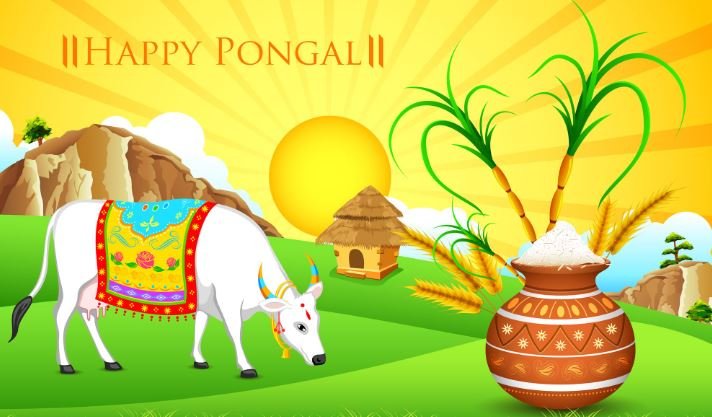

“When so rich a harvest is before us, why do we not gather it? All is in our hands if we will but use it.”
Elizabeth Ann Seton
India (Bharat) is a land of culture, values, traditions, and festivals. It’s a proven fact that India is the only country on the globe where festivals are celebrated almost every day. Festivals like Maha Shivratri, Krishna Janmashtami, Dusshera, and Diwali are being celebrated throughout the country however some regional festivals are celebrated with similar harmony.
When North India celebrates Lohri, Makar Sankranti, and Magh Bihu, People in South India start preparing for their festival called “Pongal”.
Pongal, the four-day harvest festival celebrated in South India, especially Tamil Nadu, will be celebrated with great enthusiasm from January 14-17 this year. Celebrated in mid-January every year, it also marks the beginning of Uttaarayan Which is the “Sun’s journey towards North and end of winter season”.
Pongal also called the “Thanks-Giving” festival is celebrated almost throughout Southern India. The word “Pongal” Is derived from the Tamil word “Pongu” and its literal meaning is “To Boil”.

Pongal is also the name of a rice-based dish, which is prepared only for this festival.
Pongal is a very ancient festival, and its presence can be traced back to the Sangam Age which is 200 B.C to 300 A.D.
Pongal festival is mentioned in the Sanskrit Puranas so it has been celebrated for thousands of years. Also, some historians choose to identify it with the festivals celebrated in the Sangam age.
According to some historians Pongal was celebrated as “Thai Niradal” in the Sangam age. It is also believed that during this period, unmarried girls prayed for the agricultural prosperity of the country, and for this purpose they also observed penance. These young unmarried girls would also perform fasting and believed that it would bring a healthy crop, abundant wealth, and prosperity to the country for the year ahead.
Every festival in India always has some legends and, importance attached to them. The following two legends are the most famous associated with Pongal.
According to this legend, Lord Shiva once asked his bull, “Nandi” also called “Basava” to go down to the earth and ask the people to eat once a month, have an oil massage, and bathe every day. Although unintentionally, Nandi / Basava accidentally announced that everyone should have an oil bath once a day and eat every day. Lord Shiva’s wrath was such that he banished Nandi / Basava to live on the earth forever. Here on earth, he would be required to help the people produce more food and thus help them. This is the reason for the association of cattle which also plowed the fields and worshipped during the Pongal festival.

This legend is about Lord Shree Krishna and Lord Indra. The legend says that Lord Shree Krishna in his childhood decided to teach a lesson to Lord Indra, who had become arrogant after becoming the king of all deities(devatas). Lord Shree Krishna had angered Lord Indra by asking all the cowherders to stop worshipping Lord Indra. He then sent his clouds of devastation to cause thunderstorms and floods. Lord Shree Krishna then lifted “Mount Govardhan”, located in the holy place of “Vrindavan” providing shelter to all beings and showing Lord Indra his divinity. After this Lord Indra’s false pride was shattered and he then apologized to Lord Shree Krishna.
Pongal is a harvest festival and this festival follows the solar calendar. This festival which is celebrated on the 14th of January every year, marks the initiation of the sun’s movement towards the North for six months. This Sun movement is considered very auspicious as opposed to the Southern movement of the sun.
This also signifies the event when the sun enters the zodiac sign Capricorn (Makar) and thus the name “Makar Sankranti”.
Pongal also marks the beginning of the Tamil month called “Thai”, which is considered an auspicious month.

In this festival, people thank the Sun, Mother Nature, and the various farm animals that help to contribute to a bountiful harvest.
During the Pongal festival, Tamilian families make ‘Kolams’ in their homes using colored powders. They are made to welcome Goddess Lakshmi, a symbol of happiness, prosperity, and wealth. This four-day harvest festival is celebrated with great enthusiasm and each day has its significance.
As the milk boils freely over the pot, family members shout out happily “Pongalo Pongal”! After the Pongal is offered to the Sun God, they would feast on several Pongal dishes that are prepared especially for this day.
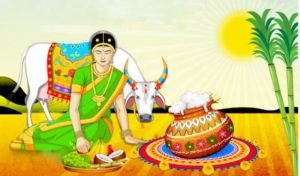
Like all Indian festivals, Pongal too is incomplete without its traditional delicacies. These recipes are dominated by flavors of curry leaves, tamarind, and kokum powder.
Here are 20 popular delicacies prepared during Pongal:

Do you get confused by the word Pongal in this delicacy? In Tamil Nadu, Pongal means festival as well as a food item. Ven Pongal is a spicier version of Pongal. It is considered a healthy breakfast dish. It is made with broken rice, moong dal, ghee, and pepper pods served with sambar or coconut chutney. It is also considered one of the best Pongal dishes to prepare and consume.
Puran Poli is a traditional sweet dish for Pongal. Also known as sweet flatbread, Puran Poli is prepared with coconut and Bengal gram dal with ghee. It is enjoyed in the states of Gujarat, Tamil Nadu, Goa, Maharashtra, and other regions of West and South India.
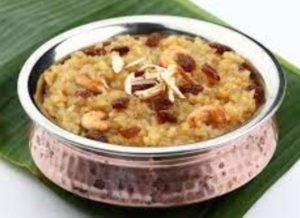
Sweet Pongal is the most important dish prepared in Pongal. It is made out of harvested rice and offered to the Sun God on the first day of the Pongal festival. It is a tasty dish prepared using jaggery, ghee, and dry fruits.
Pongal is usually prepared with rice but making it with Sooji is a quick recipe. It is an alternative to rice. The method of making this dish is different from the conventional Ven Pongal. You need to cook the dal and then cook rawa with cooked dal. Garnish with pepper, cashews, cumin, and ghee.
Akkara Adisil, also known as “Akkaravadisal” is an authentic Iyengar recipe. It is the main prasad in “Srirangam Temple”. It is also served as a prasad in temples which has a unique taste. The procedure to make this dish is similar to Sakarai Pongal, but what differentiates this dish is the variation in the richness of milk and ghee. The rice and dal are cooked in the milk and cooked again with sugar and jaggery. Later the dish is garnished with ghee when it is ready for serving.
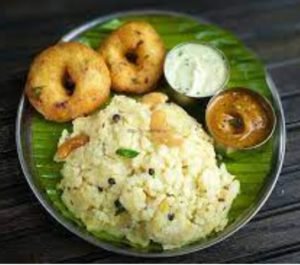
Pongal Kootu is a sambar including seven seasonal vegetables. Since Pongal is a festival of the harvest to show gratitude to Mother Nature. Pongal Kootu includes natural vegetables harvested like broad beans, pumpkin, ash gourd, potato, raw banana, sweet potato, and lima beans.
There are many Pongal dishes prepared during this festival. Each of these has a different flavor and taste. It is made of green gram, jaggery, and rice. One must try out this wholesome dessert.
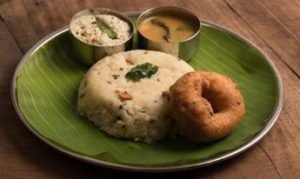
Vadai is a hit among all the food lovers of South India. Though it is served with sambhar or chutney. It is easy to prepare and delightful at the same time.
As the name suggests, they are a popular sweet from Mysore. They are made with just three ingredients-ghee, besan, and sugar. They melt in the mouth within the first bite and are also known to be first invented in the kitchens of Mysore Palace.
Rava Kesari is a popular South Indian sweet dish prepared from Semolina made during Pongal. Rava Kesari is also known as Sooji ka Halwa in North India. Other variations of Rava Kesari which are popular are Milk Kesari, Kesari Bhath, Fruit Kesari, and Pineapple Kesari.
Other delicacies that are prepared and relished during the Pongal festival also include Ribbon Pakora, Unipayyam, Murruku, Pal Payasam (Pudding), Badam Halwa, Til Gud laddoos and Tamarind Rice.
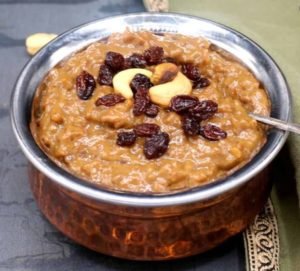
No Indian festival is complete without Kheer. It is a tradition for Punjabis to prepare Kheer during festivals. Kheer has many variants throughout the country like Payasam in Kerala and Payesh in West Bengal. No matter by which name it is called, the signature dish remains the same.
Til Barfi is a famous dish prepared during Makar Sankranti. These sweets are prepared with sesame seeds called til, ghee, khoya, and sugar. They are delicious and healthy at the same time and also provide nutrition to the body.
Wishing you all a Blissful, Prosperous, and Joyful Pongal Festival.
DISCLAIMER: The author is solely responsible for the views expressed in this article. The author carries the responsibility for citing and/or licensing of images utilized within the text.
